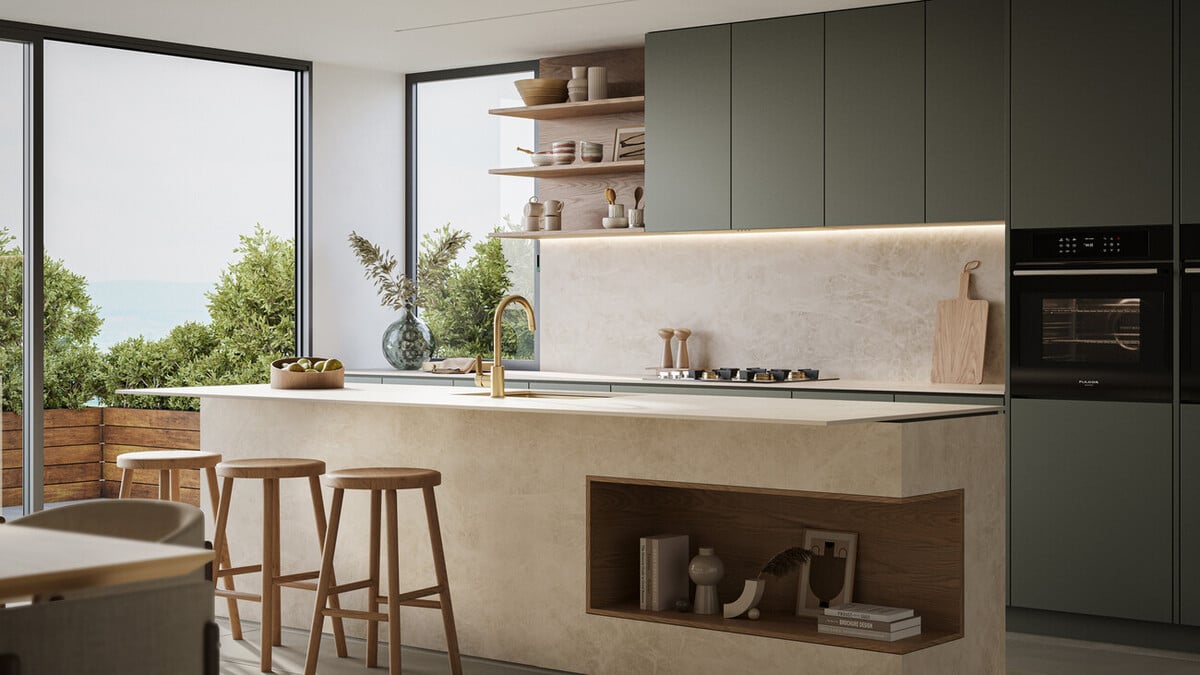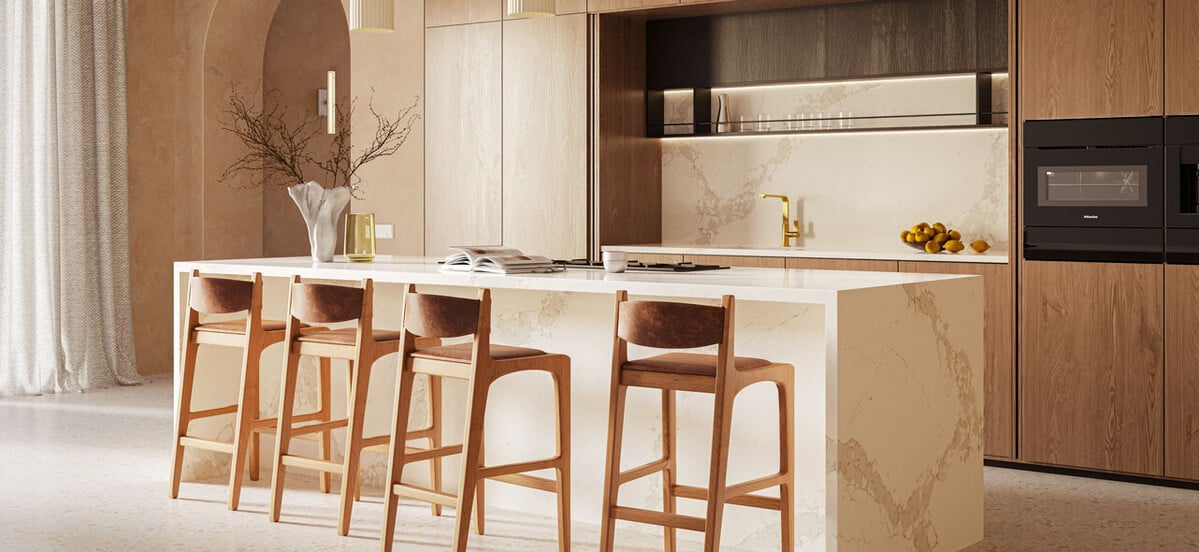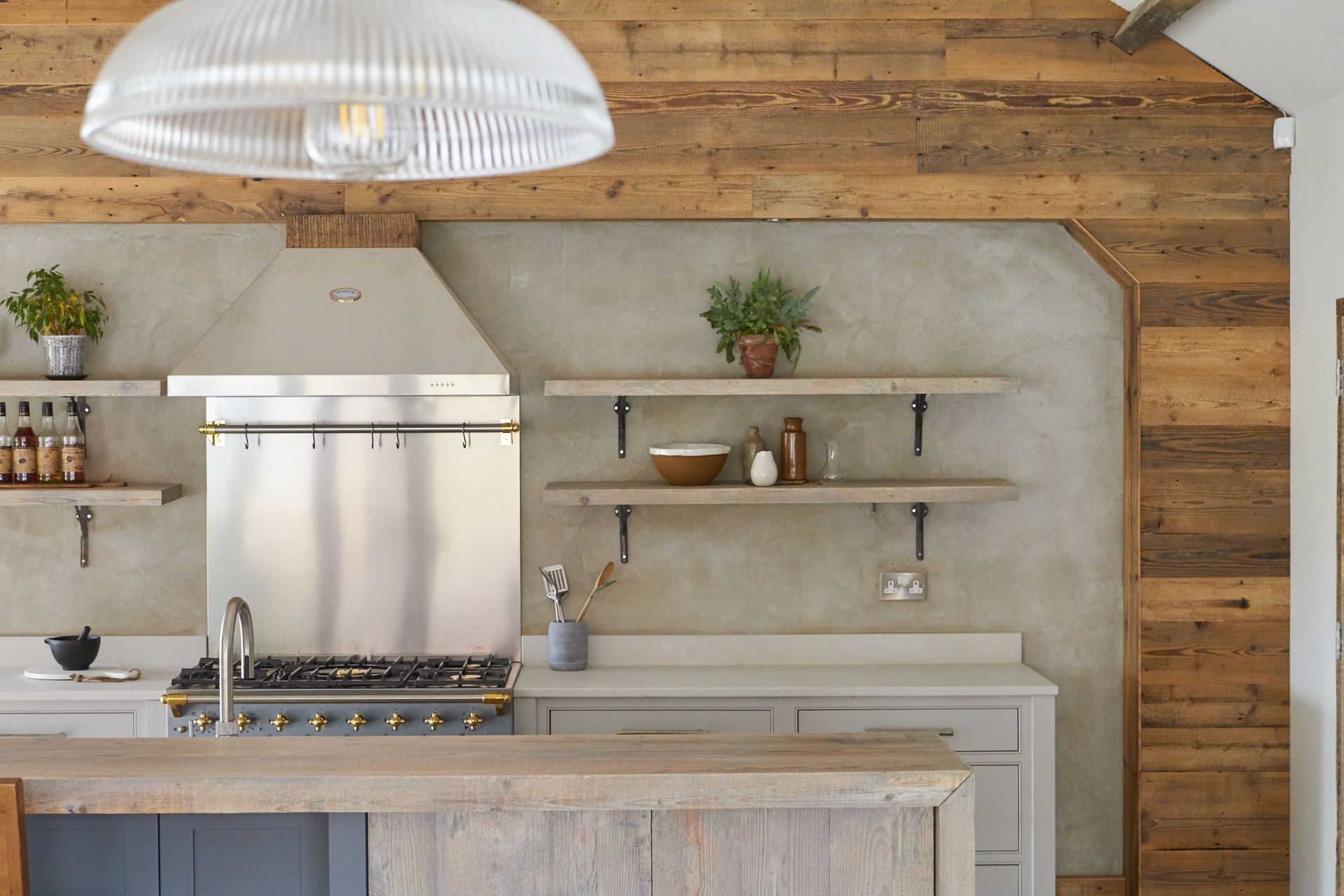
The Main Company and Caesarstone discuss environmentally friendly kitchens
As consumers, we are becoming ever more aware of the need to consider our impact on the wider environment and all evidence suggests that sustainability is influencing decisions ranging from our coffee brand of choice, to the vehicles we drive, to the design of our homes. Nowhere is this more important than in our kitchens.
Many of us desire to reduce our carbon footprint and strive to make ethical decisions on the purchases we make, but it can be difficult to know where to start when you are also considering colour schemes, appliance brands, layouts and more for your new kitchen project.
For The Main Company, a luxury design studio specialising in the sustainable design of kitchens and furniture, a primary consideration to think about when planning an environmentally friendly kitchen is the choice of materials.
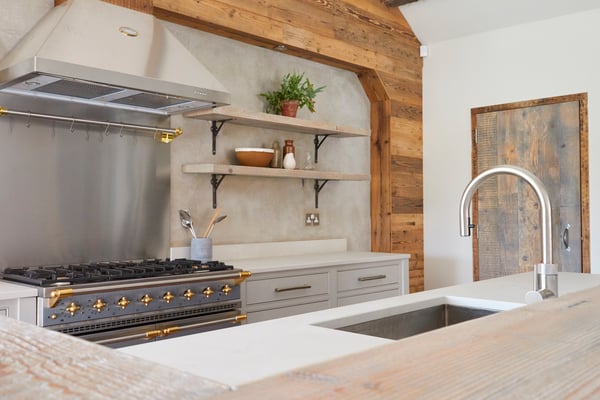 A sustainable kitchen designed by The Main Company, featuring 4011 Cloudburst Concrete quartz worktops.
A sustainable kitchen designed by The Main Company, featuring 4011 Cloudburst Concrete quartz worktops.
Alex Main, director of the Main Company, explains: “One way of reducing your carbon footprint is to think about using recycled materials in your new kitchen, such as reclaimed timber for cabinetry. We know our clients would like kitchens that have a minimal impact on the environment, and we go to great lengths to source reclaimed and salvaged woods for our kitchens. As well as being friendlier to the environment, salvaged wood also has a unique rustic charm, meeting, and often exceeding, our customers’ aesthetic expectations too.”
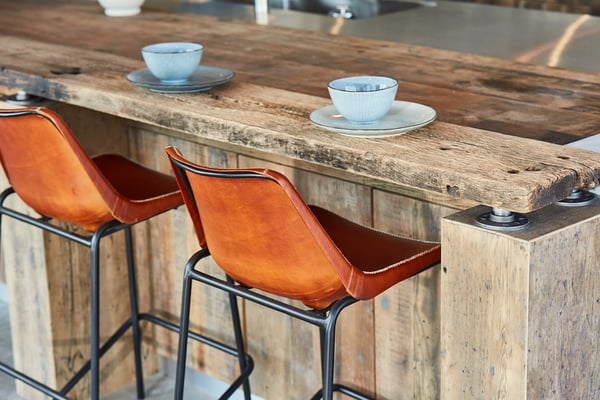 Reclaimed wood utilised in a Main Company kitchen design.
Reclaimed wood utilised in a Main Company kitchen design.
The Main Company’s wooden kitchens and rustic furniture are made using reclaimed wood. Their Cattal Street project is a perfect example of this commitment, featuring a reclaimed engineered pine wood finish of Oldham Mill board, solid oak drawer boxes, lacquered birch plywood carcasses and stainless steel.
Material choice is not limited to the cabinetry either; worktops are another area that should be considered. Focus on materials that offer strength and durability, so that they won’t need to be replaced in a few short years. Premium quartz is a good option, with a high natural quartz mineral content, and is stronger than natural stone. In addition, a quality quartz worktop will need minimal cleaning, reducing the need for strong chemicals or detergents, which can be harmful to the environment, and does not require sealing unlike other stone surfaces. When selecting a quartz brand, it would be recommended to also look at those that carry the GREENGUARD certification, a key environmental standard.
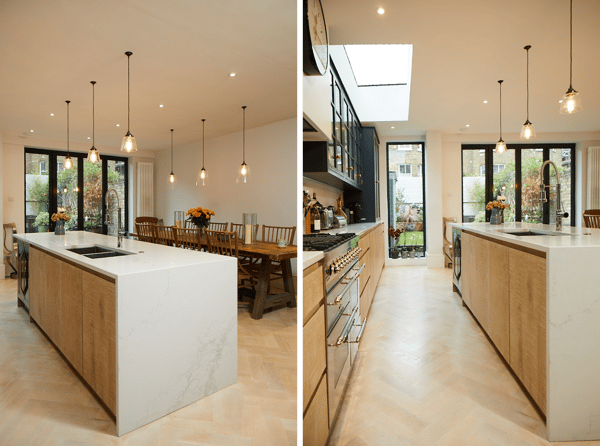 A sustainable kitchen designed by The Main Company, featuring 5031 Statuario Maximus quartz worktops.
A sustainable kitchen designed by The Main Company, featuring 5031 Statuario Maximus quartz worktops.
Caesarstone, a leading quartz worktop brand, express their commitment to sustainability throughout their manufacturing processes, including raw material management, energy saving, water recycling, package recycling, and efficient use of auxiliary materials, continually identifying and implementing means in which the company can reduce its impact on the environment.
Caesarstone incorporate high-quality reclaimed post-production waste from the fabrication process in the manufacturing of certain models, that are certified by SCS Global Services. The use of recycled materials reduces the brand’s demand for primary raw materials and diverts waste from landfills.
The Main Company are completely imbued in these processes of recycling, up cycling and sustaining natural materials. The waste they create is burnt in their biomass to heat the showroom and workshops, this also heats their kilns to dry the wood to an acceptable moisture level.
Doing their upmost to keep things as green as possible, the Main Company value working with like-minded businesses who also place a great emphasis on sustainability in their business practices.
“That’s why we pick the partners we do - not only do Caesarstone have a beautiful aesthetic with fabulous worktops to complement our bespoke style, they also share our values and commitment in reducing their impact on the environment,” says Alex Main.
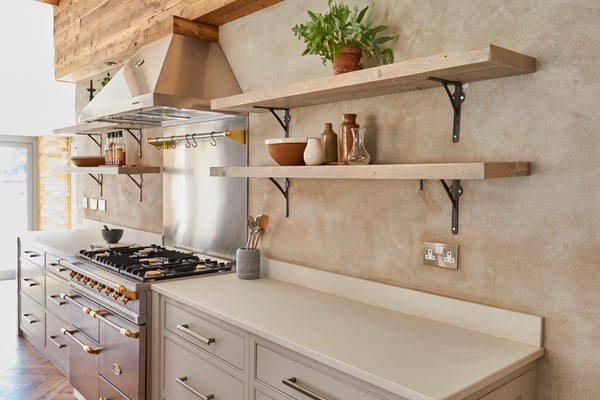 4011 Cloudburst Concrete quartz worktops feature.
4011 Cloudburst Concrete quartz worktops feature.
“Sustainability is a key consideration for us,” explains Jon Stanley, VP of Marketing at Caesarstone. “As such, we are always delighted to see completed Main Company projects, as their aptitude for creative recycling and upcycling of materials, as well as a keen eye for design, is always evident. Our shared values make them a perfect partner for us.”
When considering the final finish, the choice of paint company can also make a dramatic difference in the long-term, as Alex Main explains, “It is definitely worth thinking about the sustainability of the paints you’re thinking about. We use the environmentally-friendly Little Greene paint company; their packaging and metal cans contain recycled materials that are to be recycled again upon disposal.”
When planning your new kitchen, thinking about how you will use it once it is installed can also lead to making better design decisions for a sustainable kitchen. If you know you want to be recycling more of your day-to-day waste, then consider having compartmentalised refuse draws in your cabinetry, so that once the new kitchen is installed, recycling is easier without needing additional inaccessible storage bins.
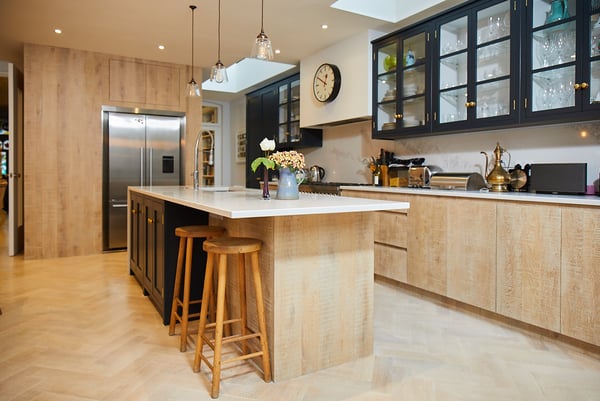 5031 Statuario Maximus quartz worktops feature.
5031 Statuario Maximus quartz worktops feature.
Several leading appliance brands also invest in energy-saving features in an effort to be more environmentally conscious; most appliances now need to publish their energy efficiency rating on an EU Energy Label that rates appliances from A to G on their efficiency, with A being the most efficient and G being the least. Opt for a more efficient appliance to reduce your carbon footprint, as well as your energy bills, and if you’re having trouble finding this information, a sustainability focused kitchen design studio, such as Main will be able to offer advice on the most efficient appliances to pick from.
Sustainability is fast becoming a consideration for all of our major purchase decisions, and planning a kitchen is no different, and the positive is that with a little forward planning and expert advice, choices you make now will continue to have a positive impact many years after your new kitchen is installed.
Images Source: Caesarstone


